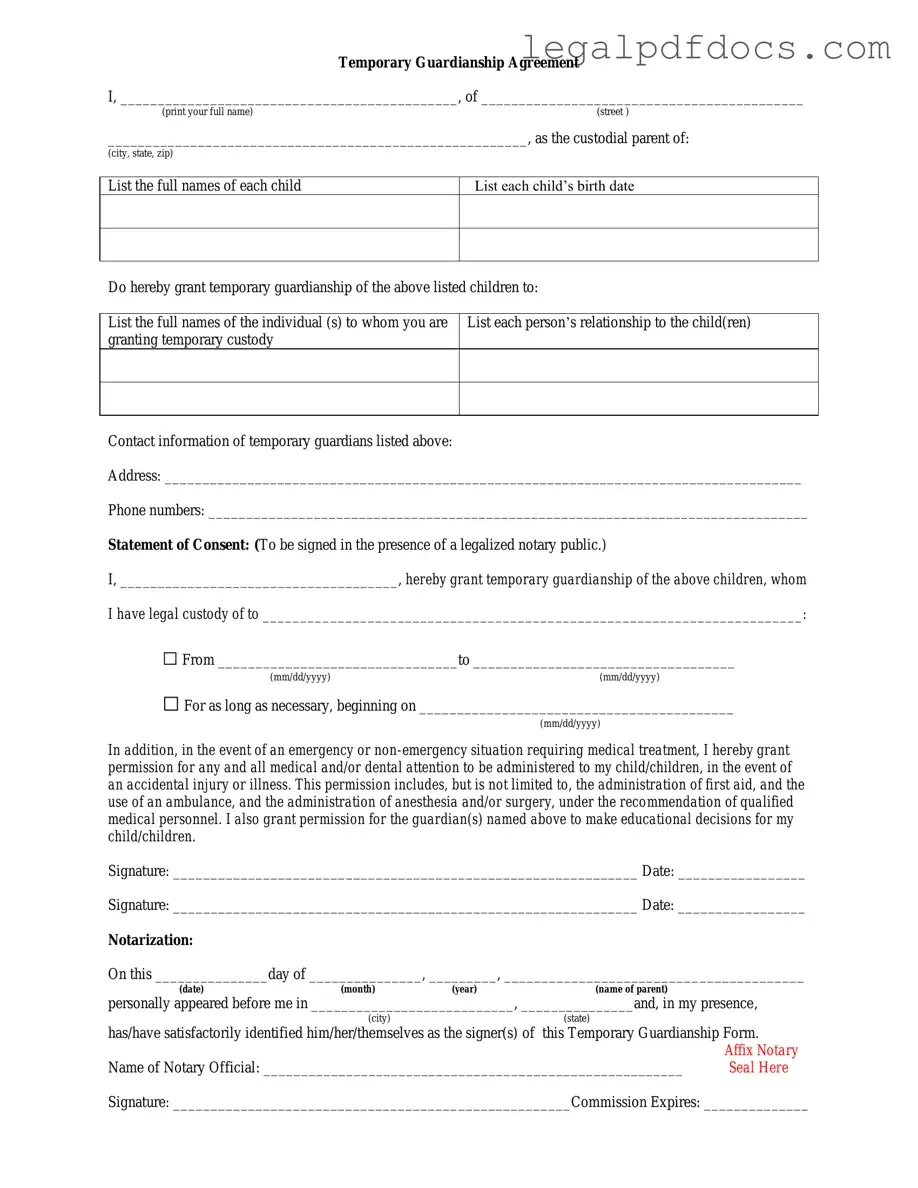Fill Out a Valid Temporary Custody Template
The Temporary Custody form is a legal document used to establish temporary guardianship of a child when parents are unable to care for them. This form outlines the responsibilities and rights of the temporary custodian and ensures the child's well-being during this period. For assistance in filling out the form, please click the button below.
Open Temporary Custody Editor Here
